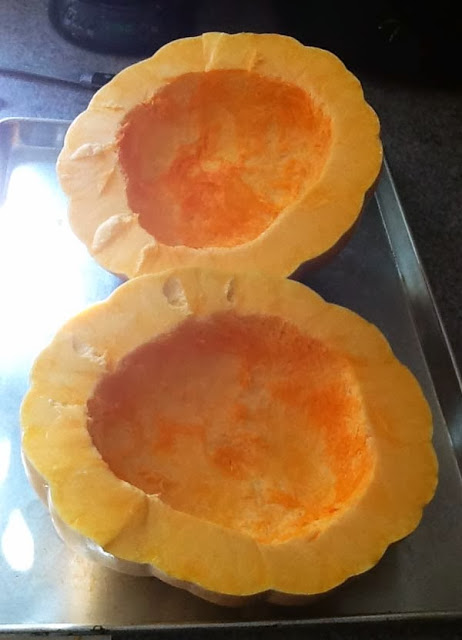My wife sent me this photo when she was making pumpkin pie with the caption “too pretty!”
We’re definitely growing Seminole pumpkins again, though I’ll probably take a one-year hiatus and grow Rick’s pumpkins in the spring so we can save seeds without crossing varieties.
Actually, I wouldn’t be surprised if the two types are closely related genetically already. They have similar coloration and both are able to tolerate the extreme humidity and heat of Florida. Perhaps the Amish got seeds from the natives at some far-off point in the past…
The Seminole pumpkin interior on our variety is very easy to scoop… but not all Seminole pumpkins we’ve tried have been that way.
UPDATE: Check out the new Seminole Pumpkin Project page!



7 comments
We love our calabazas,which look something akin to both the Seminole and the tan cheese you have linked to in your post. we LOVE eating them year-round and they seem to love the climate!
I've heard they're amazing. I believe we saw those down in the Caribbean.
So… he thinks to best me at the pumpkin game…
Summer of 2014–PUMPKIN BATTLE. IT'S ON BRO!
-Rick
I will crush you.
I have taken your heirloom variety and your secrets and I have LOTS OF FREE TIME THAT YOU DON'T HAVE!
I'm going to plant NOTHING BUT PUMPKINS! You will rue the day, my friend.
I was not only thrilled with how much food my pumpkin vines produced, once I cleared the vines I was amazed at the quality and life in the soil underneath. There were very few weeds and the deep mulch decomposed rapidly in the humid shade under the pumpkin leaves. From hot sand to soil and earthworms in 18 months. Unbelievable.
Ditto. In fact it seemed to accomplish more for my soil than the 4 previous years of composting and mulching.
That's a "side effect" I hadn't considered. I've noticed the same thing taking place under my tithonias, though, so it holds to reason. Really cool.
Comments are closed.